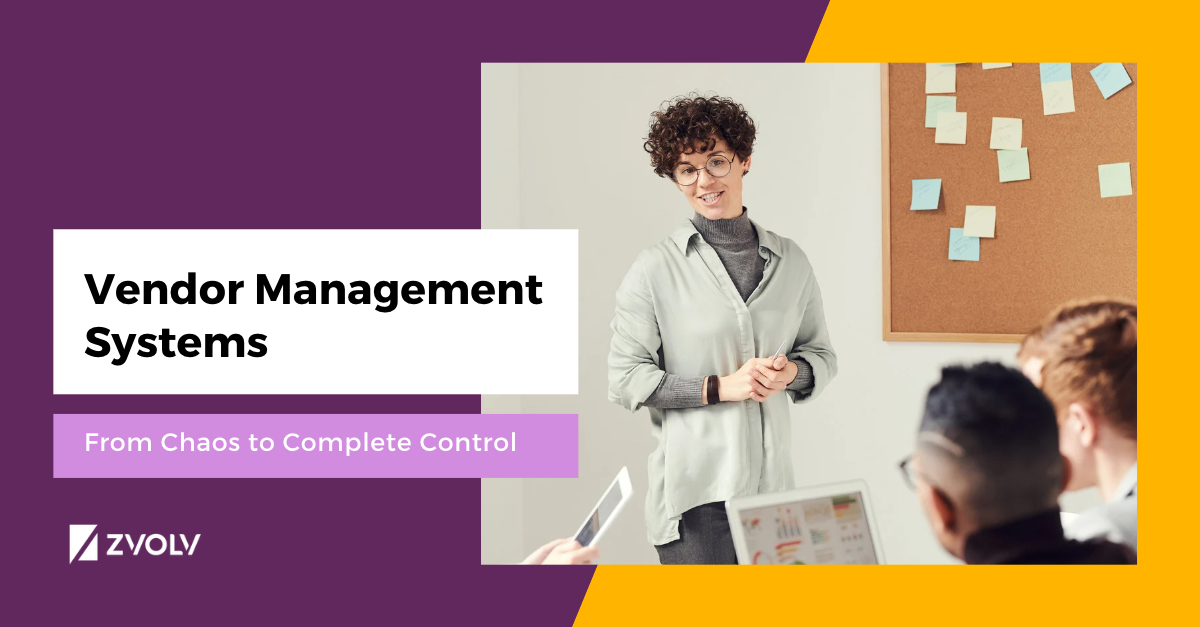A vendor management system (VMS) is like having a personal assistant for all your vendor needs, but instead of coffee runs, it handles all the mundane stuff like purchase orders and invoices.
Think of VMS as a one-stop-shop for all your vendor management needs – from finding the perfect vendor match to keeping tabs on their performance and compliance with company policies. And the best part is its ability to track payments and see all the valuable numbers in fancy reports and analytics.
Vendor Management Systems Objective and Features
The main goal of a VMS is to streamline the procurement process and improve the overall efficiency and effectiveness of an organization’s vendor relationships. It is a great way to systematize the process of working with vendors, create a standardized approach to assessing vendors and increase overall transparency and accountability of the entire process.
It also provides more control over vendor performance, compliance, and spending, which can help lower costs and mitigate risks. With a VMS, you can bid adieu to the chaos of scattered vendor information and say hello to streamlined procurement processes and improved vendor relationships.
Some of the key features of a VMS include the following:
- Vendor registration and onboarding
- Request for proposal (RFP) creation and management
- Contract management
- Invoice processing
- Payment tracking and management
- Communication and collaboration tools
- Reporting and analytics
- Risk management
A VMS can be stand-alone or integrated with other systems, such as enterprise resource planning (ERP) or supply chain management (SCM) systems.
Benefits of Vendor Management Systems
With a VMS, gone are the days of vendor information scattered across sticky notes and forgotten emails. Here are some of advantages of using a VMS:
Improved efficiency and cost savings: A VMS can automate many tasks, such as purchase order creation, invoice processing, and contract management, which can save time and reduce errors. It can also provide visibility into vendor performance and compliance with established policies and procedures to lower costs and mitigate risks.
Enhanced visibility and control: A VMS provides a centralized location to store and manage all vendor-related information, including contract details, invoices, and communication history. With all this information in one place, you can make more informed decisions and improve the overall management of vendor relationships.
Additionally, you can integrate it with other systems, such as ERP and SCM, to provide better visibility and control over the whole process.
Streamline procurement processes: A VMS can automate many of the functions involved in procurement, such as a request for proposal (RFP) creation and management, contract management, and invoice processing. It reduces the time and effort required to manage vendor relationships so you can focus on more strategic initiatives.
Compliance and risk management: A VMS ensures that vendors comply with established policies and procedures, such as those related to quality, security, and data privacy. It can help you identify and mitigate potential risks associated with vendor relationships by providing visibility into their performance and compliance.
Reporting and analytics: A VMS offers valuable insights into vendor performance and spending through its reporting and analytics capabilities for better-informed decision-making, identifying opportunities for cost savings, and improving overall vendor performance.
Overall, a VMS is a more efficient, cost-effective, and transparent approach to managing vendor relationships, which can improve overall business performance.
Limitation of Vendor Management Systems
VMS can be a powerful tool for organizations. No doubt about that. However, there are some limitations to these systems that you should know when considering implementing a VMS. Here are a few potential limitations of VMS:
High implementation costs: VMS can be costly, especially if you purchase and maintain an in-house system. The prices can include the following:
- Purchasing software.
- Integrating it with existing systems.
- Training employees to use it.
Complexity and customization: Some VMS can be complex to set up and customize, requiring a high level of technical expertise or specialized consultants to get the system up and running.
Limited vendor adoption: Some vendors may be reluctant to use a VMS, mainly if it is not widely used in the industry. It can lead to difficulties in communication, tracking, and compliance with established policies and procedures.
Dependence on software availability: A VMS that is not cloud-based relies on the company’s IT infrastructure and hardware, affecting its availability and continuity.
Limited scalability: Some VMS have limited scalability, making managing many vendors and transactions difficult.
It’s worth noting that some of these limitations can be overcome by proper customization and configuration or by implementing a cloud-based system built on a no-code automation platform like Zvolv.
Vendor Management System Workflow built on Zvolv.
Suppose you want a vendor management system that follows the given workflow:
1. Vendor On-boarding:
- Create forms and workflows for vendor registration and onboarding, allowing vendors to submit their information and go through the approval process.
2. Automated Classification and Tracking:
- The system automatically classifies vendors based on their information and tracks their history and performance.
- Relevant information is routed to the ERP systems for further processing.
3. Vendor Communication:
- Vendors receive approvals or requests for additional data through the system.
- Vendors can access a vendor portal or mobile application to review RFQs and PO information.
4. Purchase Requisition (PR) Management:
- Create forms and workflows for internal buyers to submit purchase requests (PRs).
- Use automation to identify PR types and shortlist vendors.
- Internal buyers can access a portal or mobile application to review PRs and issue RFQs to chosen vendors.
5. RFQ and PO Tracking:
- The system tracks vendor responses to RFQs and PO acceptance or changes.
- Internal dashboards and reports are used to track PRs, POs, vendors, and payments.
6. ERP Integration:
- The system integrates with ERP systems to pull and push vendor and PO data as necessary.
7. Order Execution Tracking:
- Vendors have access to an application to update the status of order execution post-PO.
- Automation escalates delays in vendor execution relative to agreed timelines.
- The team uses escalation dashboards and reports to notify stakeholders of the impact on plans due to vendor delays.
Clearly, Zvolv is a comprehensive and cost-effective solution for businesses looking to manage their interactions with vendors, suppliers, and third-party service providers.
With built-in task and workflow management, dynamic form and logic builder, an extensive bot library for custom automation, and a rich set of dashboards and drill-down analytics tools, Zvolv offers a wide range of functionalities for a streamlined and efficient procurement process.
Still unsure? Schedule a free demo with Zvolv to evaluate our vendor management capabilities for your procurement team.



